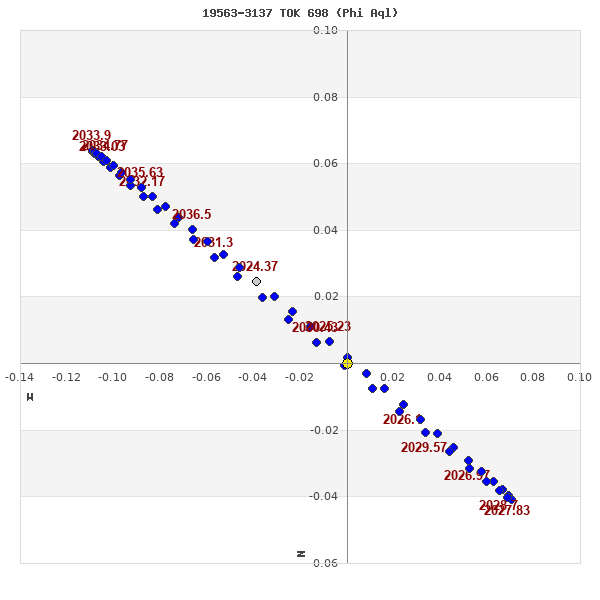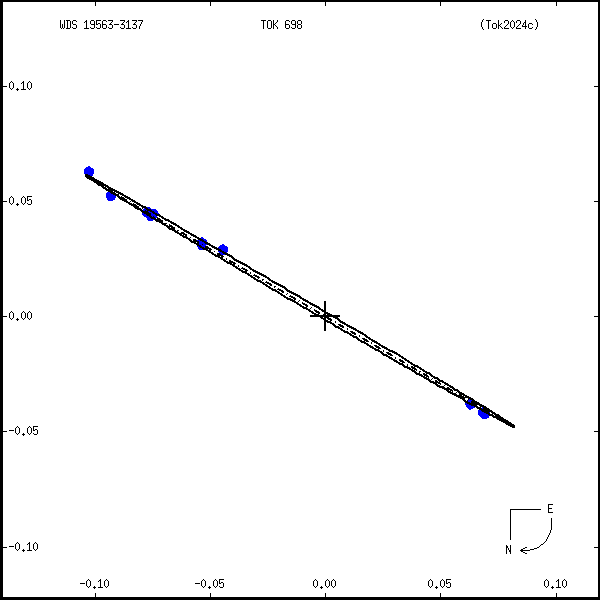| label |
theta |
rho |
| 2000 |
61.2 |
0.050 |
| 2001 |
60.1 |
0.085 |
| 2002 |
59.6 |
0.094 |
| 2003 |
59.0 |
0.071 |
| 2004 |
56.0 |
0.020 |
| 2005 |
241.5 |
0.039 |
| 2006 |
240.2 |
0.087 |
| 2007 |
239.8 |
0.114 |
| 2008 |
239.4 |
0.120 |
| 2009 |
239.1 |
0.106 |
| 2010 |
238.5 |
0.075 |
| 2011 |
236.7 |
0.033 |
| 2012 |
65.9 |
0.015 |
| 2013 |
60.8 |
0.059 |
| 2014 |
60.0 |
0.089 |
| 2015 |
59.5 |
0.092 |
| 2016 |
58.7 |
0.062 |
| 2017 |
49.6 |
0.008 |
| 2018 |
241.0 |
0.051 |
| 2019 |
240.1 |
0.095 |
| 2020 |
239.7 |
0.117 |
| 2021 |
239.4 |
0.118 |
| 2022 |
239.0 |
0.100 |
| 2023 |
238.3 |
0.067 |
| 2024 |
235.4 |
0.023 |
| 2025 |
63.3 |
0.025 |
| 2026 |
60.6 |
0.067 |
| 2027 |
59.9 |
0.092 |
| 2028 |
59.4 |
0.089 |
| 2029 |
58.5 |
0.052 |
| 2030 |
253.9 |
0.005 |
| 2031 |
240.7 |
0.061 |
| 2032 |
240.0 |
0.101 |
| 2033 |
239.6 |
0.119 |
| 2034 |
239.3 |
0.116 |
| 2035 |
238.9 |
0.094 |
| 2036 |
238.1 |
0.058 |
| 2037 |
232.3 |
0.013 |
| 2038 |
62.1 |
0.034 |
| 2039 |
60.4 |
0.074 |
| 2040 |
59.8 |
0.094 |
| 2041 |
59.2 |
0.084 |
| 2042 |
58.0 |
0.041 |
| 2043 |
243.9 |
0.018 |
| 2044 |
240.5 |
0.071 |
| 2045 |
239.9 |
0.107 |
| 2046 |
239.5 |
0.120 |
| 2047 |
239.2 |
0.113 |
| 2048 |
238.8 |
0.088 |
| 2049 |
237.7 |
0.049 |
| 2050 |
210.6 |
0.003 |
|
|

Note: Theta is PA, Rho is Sep. For yearly orbits, data refer to Jan 1st.

Measures: green=micrometric, blue=interferometric, purple=photographic
|
|
